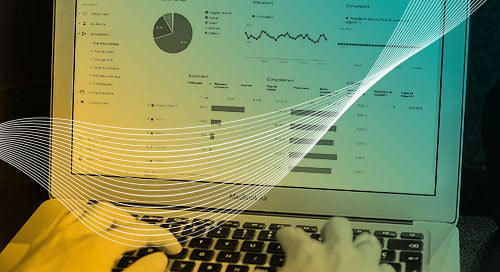What is a B2B Pricing Strategy?
By Zilliant
Sep 01, 2023
Table of Contents
- Pricing Is the Most Effective Profitability Lever
- What is a B2B Pricing Strategy?
- What Are Some Examples of Common Pricing Strategies?
- How Do Common Pricing Strategies Create Challenges for B2B Businesses?
- What Are Some Examples of Modern B2B Pricing Strategies?
- What are Some Examples of Omnichannel Price Delivery?
- How Are Modern Pricing Strategies Suited to Tackle Current Economic Trends?
- Conclusion
Learn what a B2B pricing strategy is, why many go-to pricing strategies are ineffective, and how modern, software-enabled pricing strategies greatly benefit B2B companies in an era of unprecedented market volatility and inflation.
Pricing Is the Most Effective Profitability Lever
“74% of CFOs cite lower profitability as the biggest risk organizations face as a result of input price inflation. In response to input price inflation, most executive leaders are taking near-term actions. Few firms are instituting long-term changes that could create a competitive edge,” states Gartner's 3 Ways to Mitigate Margin Pressure From Input Price Inflation report.
The fact that pricing is the most effective lever for profitability and margin growth is well established. In an era marked by unprecedented market volatility and inflation, B2B companies need to ensure that their pricing strategies accurately reflect real-time market conditions. Additionally, the growth of digital or hybrid selling, eCommerce, and self-service portals has hastened the need for market-aligned and consistent pricing across all channels.
There are many different pricing strategies that companies can implement. More traditional, do-it-yourself pricing strategies, such as cost-plus and value-based pricing, are often executed with manual processes.
While these methods have been effective in the past, many companies are coming to the realization that these processes aren't able to keep pace with the frequency of market triggers that necessitate a price adjustment. Many of these companies are embracing modern, technology-driven pricing strategies with the aid of pricing software to become much more efficient and strategic.
Read More: Pricing Software: What is It and How it Works
In this explainer, we'll explore both manual and software-driven pricing strategies, including why they do or do not work for complex B2B businesses and how well they are suited to tackle current economic trends. But first, let's define a B2B pricing strategy.
What is a B2B Pricing Strategy?
A B2B pricing strategy should be comprised of many granular strategies for gaining margin, gaining market share, and fending off competition in a manner that is aligned with customer price expectations, consistent across all commercial channels, agile enough to be updated in real time, transparent for sales team consumption, and meets a business' P&L goals.
At its core, a pricing strategy needs to consider the following:
What are your margin and revenue goals? Who are you selling to? What are you selling and at what volume? What is your value proposition? What channels do you sell through? Who owns pricing decisions? What are your competitors' pricing strategies? How is price expressed: List, customer-specific, matrix, spot/negotiated, a mixture of all? Where and how is data sourced and utilized?
HubSpot offers a succinct definition:
“A pricing strategy is a model or method used to establish the best price for a product or service. It helps you choose prices to maximize profits and shareholder value while considering consumer and market demand.”
Building from this definition, it's imperative that each price point is aligned to customer relationships, competitive dynamics, regional differences, current costs, product value, and more.
Customers in self-service channels like eCommerce should find pricing to be aligned with these dynamics without the need for sales rep intervention. At the same time, B2B pricing is commonly negotiated. Sales teams need market-aligned pricing that's transparent as to how prices were derived and why price changes are necessary.Whether a customer is on a self-service digital channel, buying from a sales rep, working with inside sales, or buying from any other channel, pricing must be consistent at each touchpoint.
These dynamics have challenged companies to rethink traditional pricing strategies and approaches, which have largely been relegated to a labyrinth of spreadsheets, emails, and inflexible pricing systems of record.

What Are Some Examples of Common Pricing Strategies?
From our experience, we've seen companies use several traditional, do-it-yourself pricing strategies to set prices. Some of these strategies include:
Cost-Plus Pricing: Adding a certain amount, such as a specific markup, to a product's cost to determine price. List-Minus Pricing: A discount from the list price that's typically expressed as a percentage discount resulting in a net price. Value-Based Pricing: The concept that there is intrinsic value being offered that's not directly captured in a product's underlying cost or list price. A value-based pricing strategy seeks to identify and quantify those drivers of value.
Learn More: Inflation Value-Based Pricing and Trucking
How Do Common Pricing Strategies Create Challenges for B2B Businesses?
The most pressing problem with these common, do-it-yourself pricing strategies is that they are not able to account for all factors that drive price response in the market. Many complex factors are at play when considering price for a complex B2B company. These include market demand, customer relationships, economic landscape, price elasticity, supply and inventory, and competition to name a few.
Go-to, manually driven pricing strategies are overly broad, and as a result, can't account for the complex dynamics outlined above. This can, unfortunately, lead to problematic behavior from sales reps. Over time, sales reps lose confidence in pricing and revert rule-of-thumb or intuition-based pricing.
When that happens, there are two possible, risk-driven outcomes: 1) the sales rep sells at a higher price to increase their commission at the risk that the customer may take their business elsewhere, or 2) the sales rep may over-discount and offer a lower price to secure the customer, which results in money left on the table.
Finally, traditional pricing strategies are typically executed using cumbersome manual processes. This means tracking and updating spreadsheets, communicating via email, and deciphering complex reports. All these processes are time-consuming and are far too slow to meet today's challenges, such as inflation and market volatility. In an era of frequent cost changes, enacting a price change needs to be done with speed and precision. Otherwise, lost margin is the most probable outcome.
![Traditional Pricing Strategy Challenges]](https://21466628.fs1.hubspotusercontent-na1.net/hubfs/21466628/Imported_Blog_Media/aHViPTY2MjAxJmNtZD1pdGVtZWRpdG9yaW1hZ2UmZmlsZW5hbWU9aXRlbWVkaXRvcmltYWdlXzYyMWZjOWViNmNmNTAuanBlZyZ2ZXJzaW9uPTAwMDAmc2lnPTNmMDYyNzUyYzcwZWM3ZDEzMDE2N2I5YjgyNTA4ZWY0.jpeg)
What Are Some Examples of Modern B2B Pricing Strategies?
Modern pricing strategies can be better executed with end-to-end pricing software. Pricing software affords complex B2B businesses the ability to process large amounts of data quickly, automate processes, and more effectively optimize or manage prices. Price Optimization and Price Management software are the two most prominent tools used today to enable modern pricing strategies.

Price Optimization-Driven Price Strategy
Price optimization is a constraint-based optimization process that simultaneously accounts for all the factors that drive price, rationally aligns price/customer/order/product relationships simultaneously, and statistically measures what drives price response in the market, all while enforcing necessary guardrails and generating prices that meet P&L goals. Many complex factors are at play when considering price:
How competitive is this region? How much business does this customer bring in? Do these prices reflect current costs? How important is this product to this customer in terms of overall spend? How frequently does this customer order?
Price optimization considers all these dynamics, and more, while simultaneously enforcing business rules such as: Don't raise prices more than 5% in the Southwest region, but also ensure a minimum margin of 25% for a specific product sub-category.
Those in the pricing strategy seat can focus on how to achieve specific revenue and profit goals for different pricing segments at varying levels of granularity.
Read More: Price Optimization: A Guide to Maximizing Profit
For example, one building products manufacturer found itself caught in the middle of unprecedented cost volatility during the pandemic. Ninety percent of the company's raw materials costs were steel, and pandemic-driven inflation increased steel prices substantially. The manufacturer worked closely to monitor the market and develop a comprehensive, cyclical price optimization and management method.Their method included using price optimization software to put prices into market quickly and accurately, gain insights with comprehensive pricing analytics, simulate cost pass-through approaches, and enable reporting on where margins are growing in regional and product-specific segments. The result was that the pricing team was able to both conjure an inflation and cost volatility-response strategy and execute it dynamically.
Read More: Strategic Pricing: Thriving in Tumultuous Times
Price Management-Driven Pricing Strategy
When B2B companies set prices, accuracy, speed, and precision across channels is more critical than ever. However, traditional pricing strategies simply do not enable the pricing control that's necessary as market conditions change and only add to the complexity of the price-setting process. Price management software allows for both greater control of your pricing strategy and the ability to streamline cumbersome manual tasks and approvals.B2B pricing strategies that can be streamlined and executed more effectively with price management software include:
Updating prices for cost, competitive or other market factors Ensuring list prices make sense in terms of product good/better/best relationships Cascading list price changes to other price types Creating and managing a price segmentation structure Segmenting and assigning customers and products into relevant matrices Managing customer and product assignments over time Setting a rules-based pricing strategy
Read More: Zilliant Price Manager™
Adding to the challenge, external pricing triggers such as frequent cost changes, inconsistent demand, competitive price threats, and disruptive eCommerce trends complicate and slow price changes by bringing in more processes and decision-makers. What makes price management software so beneficial is that it aligns teams, smooths out the pricing process, and enables flexible, rapid responses to external triggers.
A price management tool offers cost pass-through functionality, which allows prices to be updated quickly in a central location and delivered to sales quoting and agreement tools transparently. The result is price changes that can easily be calculated, tracked, and communicated. Also ensuring prices are accurate and consistent across all sales channels is a critical piece of a price management strategy. Price management software provides unparalleled capabilities to dynamically update prices and deliver them seamlessly into any ERP, CRM, CPQ, or eCommerce system.
Read More: An Introduction to Price Management
What are Some Examples of Omnichannel Price Delivery?
Price optimization and management software are extremely powerful means to ensure pricing is relevant to market conditions. However, just as critical to an advanced pricing strategy is a strategy to ensure pricing is quickly disseminated into all your commercial systems.
“36% of B2B buyers say an inability to get the best price online is a significant barrier to doing more business via the digital commerce channel,” stated Gartner Senior Research Director, Mark Lewis in a report.* “To unblock those potential buyers, it's essential to employ an AI-driven, real-time and value-based pricing engine, which can consider competition, customer profile, stock availability, etc. to come up with the best price for each buying situation. Not all customers have to see the same prices. This model is employed successfully to optimize the profits of airlines, hotels and car rental companies. In this situation, customers must understand that they are seeing a spot price that can go up or down. Most importantly, they must get the same spot price regardless of channel interaction.”**The Zilliant Real-Time Pricing Engine™ meets the growing need for a faster, more robust way of handling the pricing demands of complex omnichannel B2B companies. The solution's high-availability, high-performance REST API with 99.99% guaranteed uptime executes complex pricing logic, and performs complex calculations, including external data lookups, to deliver prices to any ERP, CRM, CPQ, eCommerce platform or mobile application in real-time.
How Are Modern Pricing Strategies Suited to Tackle Current Economic Trends?
B2B Pricing Strategies for Inflation
As costs continue to rise in our era of unprecedented inflation, a heavy-handed approach to price increases is not the answer. Manual pricing tools that make up the status quo of traditional pricing strategies for many B2B organizations have become active impediments to executing effective price increases. Companies that utilize modern pricing strategies, using price optimization and price management software, have discovered that it is possible to be surgical and speedy, at scale.
Price optimization can predict the outcome of pricing strategies before new prices are published. Now, for example, it's possible to see clearly how a 1% price increase will impact revenue and margin in one segment versus a 5% price increase in another. It might make sense to claim twice the cost increase on your differentiated products, because you know you must take less on other commoditized items. The result of this surgical and asymmetric strategy is a more optimized balance of price increases that limit volume loss.
Read More: How Global Companies Can Beat Inflation
Time is the most critical factor for updating prices when costs change. It's not uncommon for manual price increase processes to take up to 90 days - in some cases up to four months - from decision to execution. As author and pricing evangelist Stephan Liozu said in a recent Zilliant podcast, “90 days in an inflationary period is deadly.”
For large B2B companies that operate globally, the arduous process of updating their price lists and passing through cost changes to each country they do business in is increasingly untenable in today's market climate.
With the Global and Country Price List Quick Start package you can deploy Zilliant Price Manager™, our market-leading price management software, in as few as four weeks to transform this time-consuming, manual process into a turnkey one. Our pre-built templates make it easy to:
Update global list prices as costs change using pre-defined cost pass-through strategies Perform currency conversions to calculate country list prices Make additional country factor adjustments to list prices Provide scoped user access to centralized and decentralized pricing teams within the same system of price management Add additional waterfall elements with out-of-the-box extensions Make massive spreadsheets and slow update cycles a memory - in just a month.
B2B Pricing Strategies for Dropping Costs
When dealing with price decreases in a period of softening demand and falling costs, determining just how far to go is the biggest challenge. This is where a modern pricing strategy, powered by pricing software and data science, can truly help. A modern price optimization strategy allows you to understand exactly how your customers actually respond to price. You can determine — with statistical precision — the specific attributes that result in varying degrees of price elasticity at a transactional level. Identifying and understanding these variables is the key to knowing how far is too far when adjusting your prices. Additionally, price management software makes it straightforward to bring in new cost data, adjust price lists and publish new prices when ready.
Companies that leverage modern price optimization and price management strategies have a distinct advantage in times of economic volatility. Yes, the current marketplace is extremely challenging, but with science and technology, you can reduce the negative impacts, minimize the guesswork, and know exactly how far is too far.
Read More: Electrical Product Manufacturers: Profitably Manage Falling Costs

Conclusion
As mentioned previously, pricing is the most critical lever when it comes to profitability and margin growth. Now is not the time to use inaccurate, inefficient and manual process-driven pricing strategies - especially in today's highly competitive and volatile marketplace.
Pricing software is the key to making pricing a competitive advantage. By using price optimization and management software, B2B pricing teams can streamline or automate processes and ensure speed, accuracy, and precision when updating prices across all channels.
Watch: Essential Price Optimization and Management Advice
Talk to Zilliant today about how you can begin using price optimization and management software within your organization.
**Gartner, “Harness the Core Capabilities of a Digital Commerce Platform”,Mike Lowndes,Christina Klock, published September 4, 2019 and refreshed on February 9, 2021.



